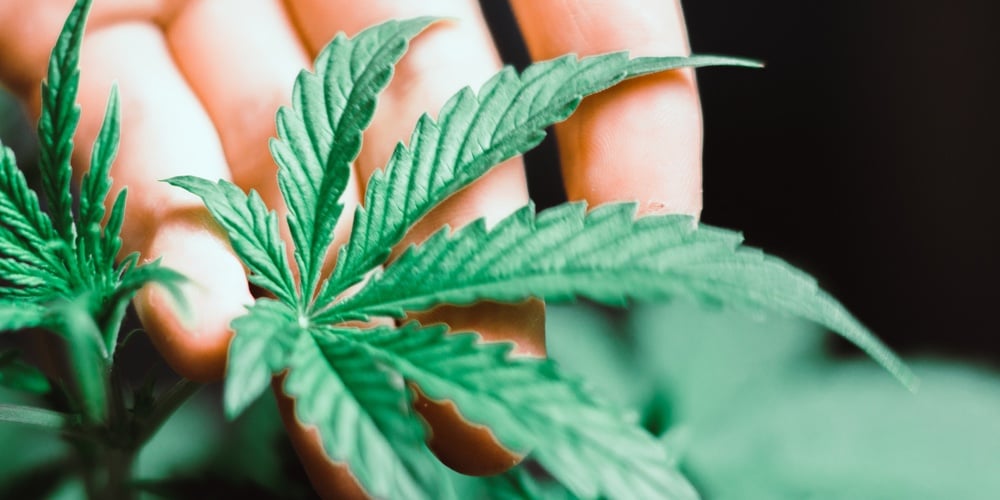I think I’m banking marijuana, now what?

I wrote a previous article titled “You are already banking marijuana. You just don’t know it.” The article focused on the fact that marijuana proceeds have a wide reach and are most likely found in all financial institutions across the United States.
Landlords, lawyers, CPA’s, electricians, plumbers, bookkeepers, insurance companies, home improvement stores, pizza delivery, and numerous other businesses are providing products and services to marijuana related businesses (MRB’s) and are receiving proceeds from marijuana sales. Also included in that list are all the states, counties, and local municipalities that are receiving tax revenue from MRB’s.
I was at a speaking engagement last month and a banker from a state without legalized marijuana felt confident that they nor their proceeds had any association with MRB’s. I asked if they or any of their account holders owned any of the popular mutual funds by Vanguard or Fidelity. Their answer was “yes”.
What they didn’t realize was that widely held stocks, such as Scotts Miracle-Gro, are holdings in several index and mutual funds, and that Scotts has been increasing its cannabis-focused Hawthorne Gardening subsidiary for the past several years. The dividends they pay contain marijuana revenue, and those monies eventually find their way into financial institutions and accounts across the United States. The point here is that even if you are in a state without legalized marijuana, you have investors and monies in your state, whether direct or indirect, that touch the marijuana space.
I subscribe to the generally accepted three tier classifications of MRB’s: Tier I – Product touching, Tier II – Businesses directly supporting or whose primary customers are Tier I MRB’s, and Tier III – Those that have incidental business with Tier I and Tier II MRB’s. Here is a summary list of ways to identity possible MRB activity in your institution:
- Ask “Do you derive revenues from marijuana related activity” in your CIP, account opening, and ongoing risk assessments
- Screen your current accounts against the names and addresses of Licensed MRB’s
- Enhance your transaction monitoring, especially as it pertains to cash
- Review large items in more detail
- Review websites on suspect accounts
- Marijuana cash has a distinctive scent
- Conduct a site visit
As Tier I MRB’s are generally easier to identify, I am going to focus more on the ancillary Tier II and Tier III MRB’s. When you identify a possible MRB account, or if the account holder or applicant answers “Yes” to the question of derived revenue, you should obtain more information to determine their MRB tier. At that point, you need to determine if you are going to accept or keep the account, or to de-risk them out of your institution.
The FinCEN guidance of February 2014 uses the wording “funds derived from illegal activity” when outlining the Suspicious Activity Report filing requirements. Outside of that, it really does not specifically or narrowly define the question of “What is a marijuana related business?”.
So, if you are directly banking Tier II or Tier III MRB’s, do you need to file a marijuana SAR? Generally speaking, banking Tier III MRB’s poses little risk and it is my opinion that FinCEN does not expect you to be filing SAR’s on the pizza delivery person that happens to drop off an occasional food order at a dispensary. Tier II MRB’s become a different story.
In closely examining Tier II MRB’s, I have found that in some circumstances their risk profile is actually higher than banking a Tier I. Those Tier I MRB’s undergo license and underwriting scrutiny from the State. They typically have strict inventory and reporting requirements and undergo third-party inspections. Your Tier II MRB’s generally have close ties with product touching MRB’s, are not required to be licensed, and have no State required marijuana audits. Being that the FinCEN guidance is the only federal document regarding marijuana banking, I lean towards taking the guidance very literally regarding SAR reporting.
Although some institutions set a percentage threshold to define Tier II and Tier III (i.e. 20% or more in marijuana revenue), I recommend filing marijuana SAR’s on all of your Tier II MRB’s. Better to be conservative and file an extra SAR than to be penalized for failing to file a SAR.
If you are deciding to accept or keep Tier II MRB’s, you still have preparation to complete. Many of the requirements in banking Tier I’s are applicable to Tier II. I have a 12-Step process that will assist you:
- Is the Board “on board”?
- Determine if banking MRB’s is appropriate for your institution
- Review and understand relevant regulations
- Analyze the strength of your current BSA / AML program
- Assess training requirements
- Perform a risk-reward analysis
- Review relevant technologies
- Prepare a business plan
- Communicate with regulators
- Obtain Board approval
- Develop MRB policies, procedures, and underwriting standards
- Implementation
The initial application and documentation for a Tier II MRB would generally start with the type of documents necessary if you were giving them a commercial loan, along with marijuana specific additions. Be sure to obtain information on the Tier I customers of your Tier II accounts. I would even go to the extent of checking licenses and creating a whitelist of vetted vendors.
Ongoing due diligence and transaction monitoring should be commensurate with risk and I would include site visits in the mix. Be open with your MRB clients and establish a set of required expectations (Covenants) from the start. If your MRB’s understand up front what it takes for you to bank them, it helps to establish a partnership mentality.
Regarding pricing, the fee schedule for banking Tier II MRB’s is generally less than that in banking Tier I’s. Pricing may vary greatly depending on risk, volume, and geographic region. Supply and demand also come into effect in MRB pricing. Compliance is not free, and you should charge sufficient fees to cover your costs, plus a reasonable rate of return. Your ultimate goal is to bank MRB’s in a sustainable, responsible, and profitable manner.
Feel free to contact me with any questions.





